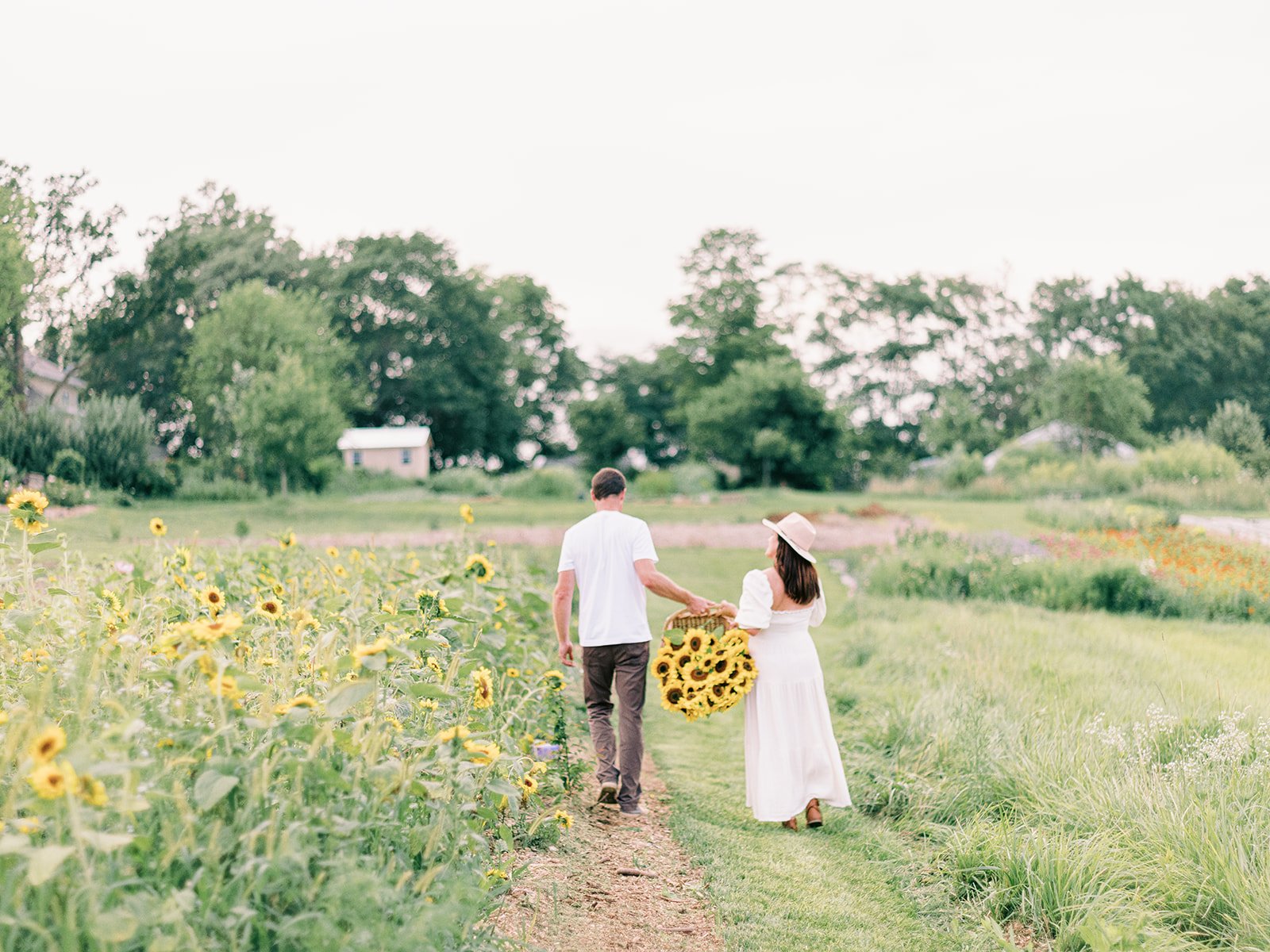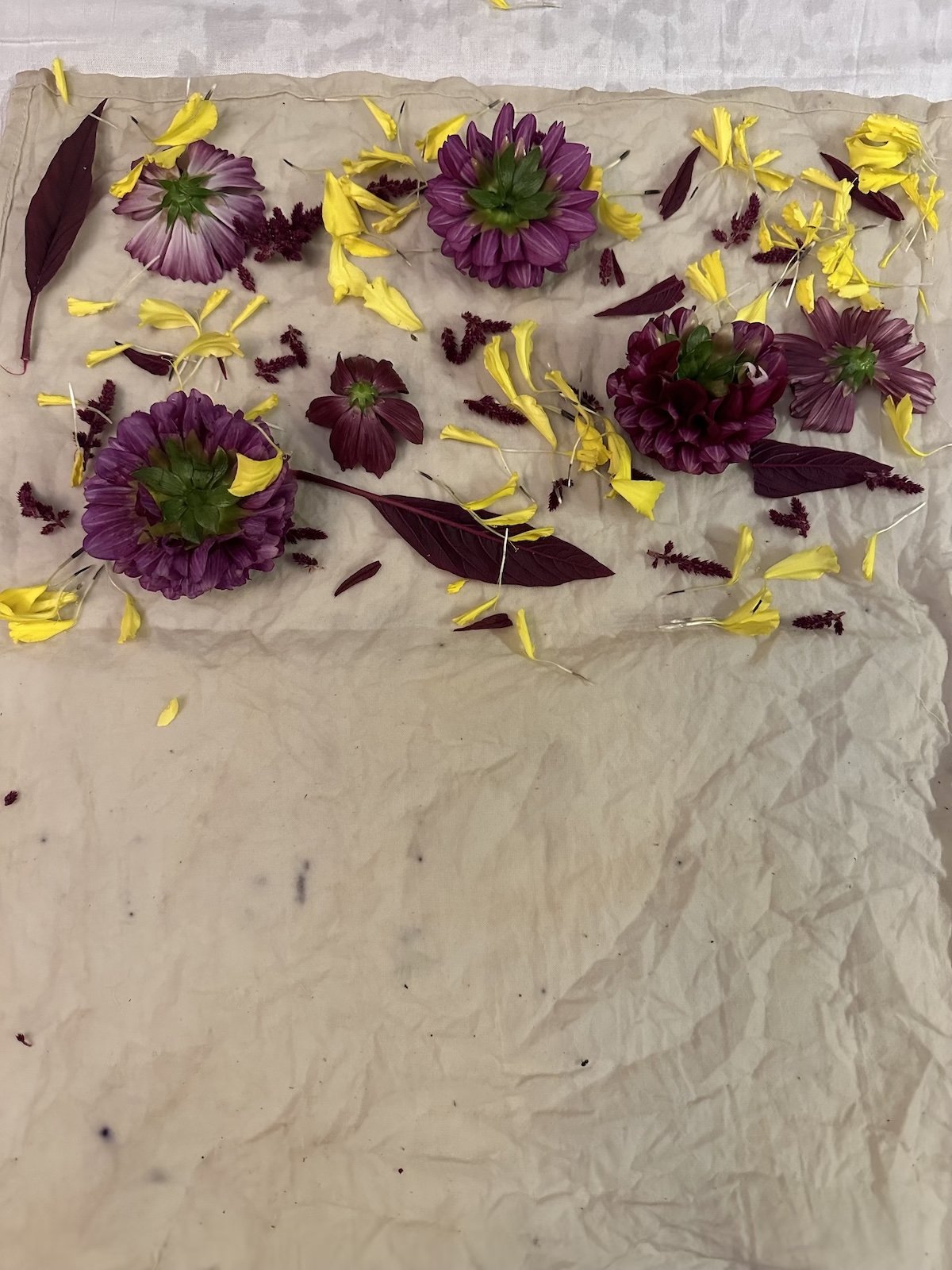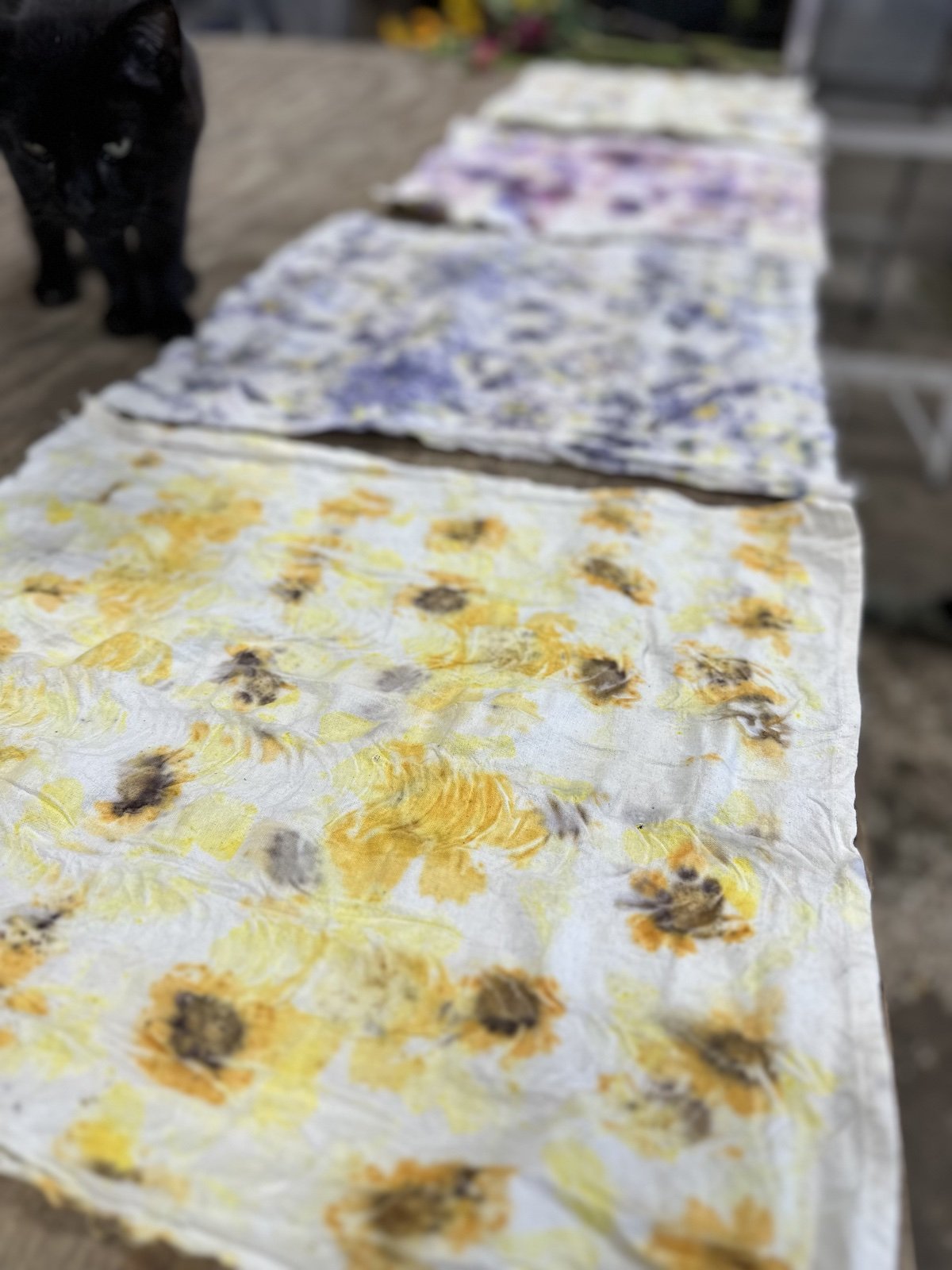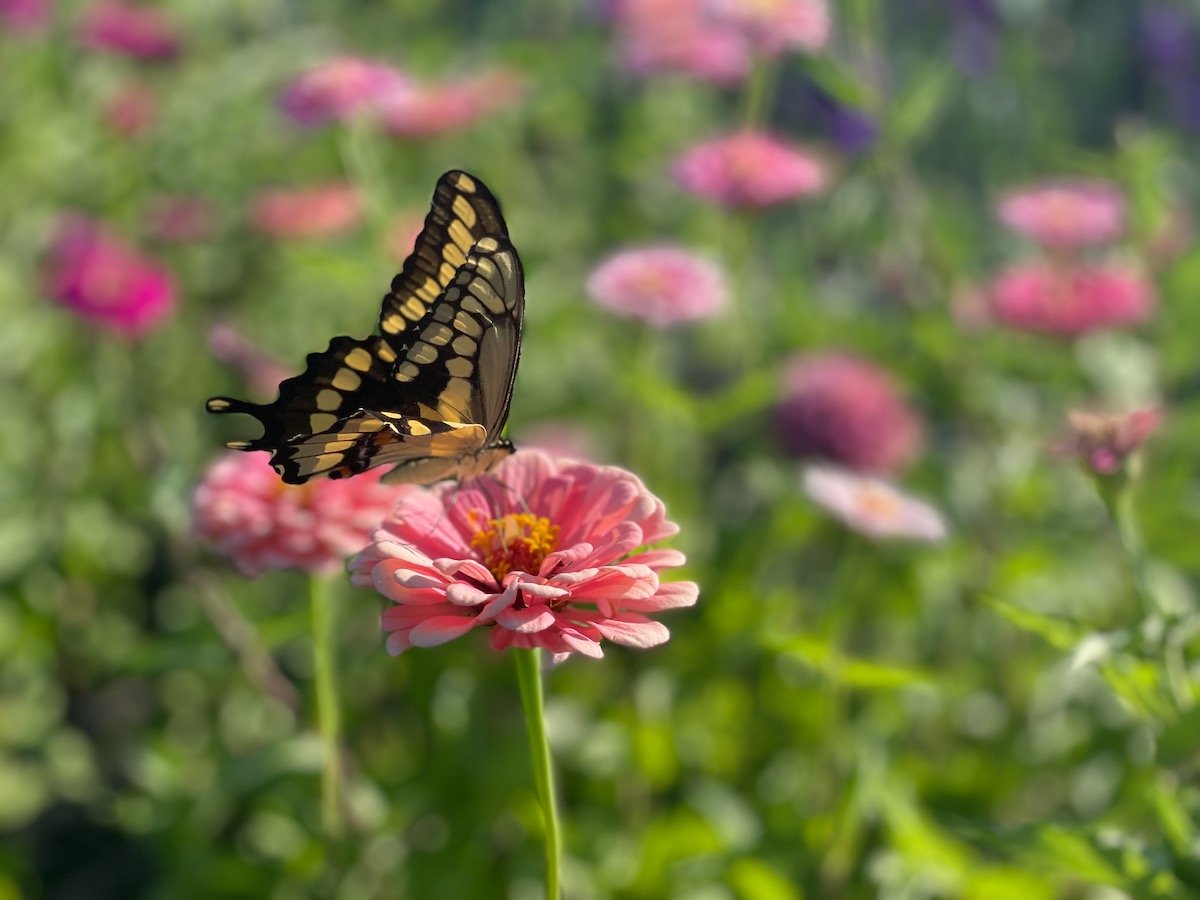
Using Flowers to Create Botanical Based Dyes
Explore the enchanting world of flower-based dyes. Discover the magic of marigolds, lavender, coreopsis, cosmos, dahlias, and indigo leaves, each offering a unique color palette for your creations. From selecting the right flowers to unveiling the vibrant hues after the dyeing process, immerse yourself in the art of botanical dyeing and embrace the charm of nature's diverse colors on your fabrics.
The Charms of Botanical Dyeing
Botanical dyeing takes us back to simpler times, using the colors nature provides. It's like a plant-based paint palette that can turn ordinary tea towels into works of art. By using flowers, we can create a rainbow of shades that are both unique and eco-friendly.
Picking the Right Flowers
One of the exciting parts of botanical dyeing is selecting the flowers to work with. Different flowers yield different colors, offering a playful twist to the process.
Marigold: These sunny blooms create warm yellows and oranges, reminiscent of a golden sunrise.
Lavender: If calming pastels are your preference, lavender flowers are perfect for gentle purples and grays.
Coreopsis: With their vibrant petals, coreopsis flowers bring about shades of cheerful yellows and deep oranges.
Cosmos: Bright Lights or Sulphur cosmos as the best for dyeing, but we’ve found that we love the colors created by some of the darker cosmos. They make a lovely purple or blue color.
Dahlias: Provide a variation of shades, but the darker colors make the prettiest colors.
Indigo: For rich blues, indigo leaves hold the secret, providing a touch of deep ocean hues.
The Color Journey
Before diving into the dyeing process, the fabric needs a bit of prep. This involves cleaning and treating them to make sure they absorb the colors well. Once fabric has been prepped, you leave it damp, but not wet and add your flowers for dyeing. We use the bundle dyeing process for making our prints, which involved scattering flowers on the fabric, rolling the fabric up, then using a steam process to release the dye from the flowers.
After the fabrics have steamed for an hour, remove and open the fabric. The colors from the dye process are immediately visible. Gently remove all flowers from the fabric, then give your fabric a little rinse and hang to dry.
Botanical dyeing isn't just about changing colors; it's about connecting with nature and embracing its diversity. Each fabric created with botanical dye carries a piece of the flower farm's charm, telling a story of petals, leaves, and the colors they gift us. So, next time you use one of these tea towels, remember the journey it has taken – from the flower farm to your kitchen, with a touch of nature's magic in between.
XX Jenn and Adam
Spring Planning for the Flower Garden
Spring into action with our essential tips for a blooming flower garden! From choosing the right plants to easy-to-grow flowers, soil preparation, and smart watering, we've got you covered. Learn the art of deadheading, protect your garden from pests, and make the most of the spring sunshine. Follow these tips for a beautiful and thriving flower garden that will be the envy of your neighborhood. For more inspiration, check out our guest features on MarthaStewart.com and join us on Instagram and Facebook @pepperharrow_. Happy gardening!
Spring is the perfect time to start thinking about your flower garden. Whether you're an experienced gardener or just starting out, there are a few tips and tricks that can help ensure a successful, beautiful display, full of blooms all growing season long. Here are some spring flower garden tips to help you get started with a beautiful flower garden:
Choose the Right Plants: When selecting plants for your garden, it's important to choose ones that are well-suited for your climate and soil type. You can consult with your local nursery or gardening center for recommendations on plants that thrive in your area. Check out our flower, shrub, tree, and ground cover suggestions for each growing zone in our guest contribution for MarthaStewart.com. You can access it here!
Choose Easy to Grow Flowers: We love growing easy to grow flowers, because they give us high impact color and blooms for very little effort. These are also great to look at when you first start a grade, because they’ll help you to build confidence as you grow! Here’s some great ideas via our guest feature in MarthaStewart.com for 12 Easy Annuals for Beginner Gardeners.
Prepare the Soil: Before planting, make sure to prepare the soil by adding compost or other organic matter to improve its texture and nutrient content. This will help your plants grow strong and healthy.
Water Wisely: It's important to water your plants regularly, but be careful not to overwater them. Too much water can lead to root rot and other issues. Check the soil moisture regularly and water as needed.
Provide Enough Sunlight: Most flowering plants require plenty of sunlight to thrive. Make sure to choose a spot in your garden that gets plenty of sunlight throughout the day. We recommend at least 6 hours of sun each day for a plant that requires full sun, part sun or also shade. For shade plants, they just really don’t like a lot of intense sun, dappled is best!
Deadhead Regularly: To encourage your plants to produce more blooms, it's important to deadhead them regularly. This involves removing spent flowers from the plant to promote new growth.
Protect from Pests: Unfortunately, pests and insects can be a problem in any garden. To protect your plants, consider using natural remedies like neem oil or companion planting with herbs like basil and mint, which can repel pests.
We hope these tips help you create a beautiful and thriving spring flower garden! If you need more flower garden inspiration, follow along with us on Instagram via pepperharrow_ or on Facebook: PepperHarrow. And let us know if you have any questions, by commenting below!
XX Jenn and Adam
All About Roses!
It’s been a busy week at PepperHarrow with lots of rose pruning! Roses, especially David Austin varieties, hold a special place here. While not ideal for cut flowers due to a short vase life, their beauty and fragrance shine in weddings. Exploring other cultivars, Kordes varieties like Madam Annisette and First Crush impress with disease resistance and resilience to extreme weather. J Griffith Buck's roses, such as Quietness, stand out for hardiness and magnificent fragrance in the Midwest. #RoseGarden #FloralBeauty
It’s been a crazy week, full of lots of rose pruning and TLC. There as sooo many roses here at PepperHarrow, because they’re one of my favorite flowers. They don’t make particularly good cut flowers, because they just don’t have a very long vase life, but they just look absolutely gorgeous in weddings. They also have such a divine fragrance!
Admittedly, I have a lot of David Austin garden roses, here at PepperHarrow. I love all the varieties of old fashion, English roses they have available. Also, the fragrance is remarkable. David Austin roses are know for their romance and whimsy. However, now that I’m getting mature with my rose growing, I see that there are other cultivars that perform better for us, here in zone 5B, Central Iowa.
One of these varieties is Kordes. KOR-anything, as a general rule, are welcome here on our farm. They are extremely disease resistant and do really well with our extreme weather—really, really hot and really, really. cold. One of my favorite Kordes varieties are Madam Annisette and First Crush. Not only do they produce a prolific amount of blooms, but I can also enjoy their gorgeous foliage. Also, the blooms feel thicker and less likely to shatter after they’ve been cut.
Another favorite rose cultivar is anything from J Griffith Buck. These roses are known for their hardiness here in the midwest and perform amazingly! Quietness is one that I have growing at the flower farm. I have her front stage and center, outside of my house, in the cottage garden. Such a magnificent fragrance, fragile beauty, and great performer!













